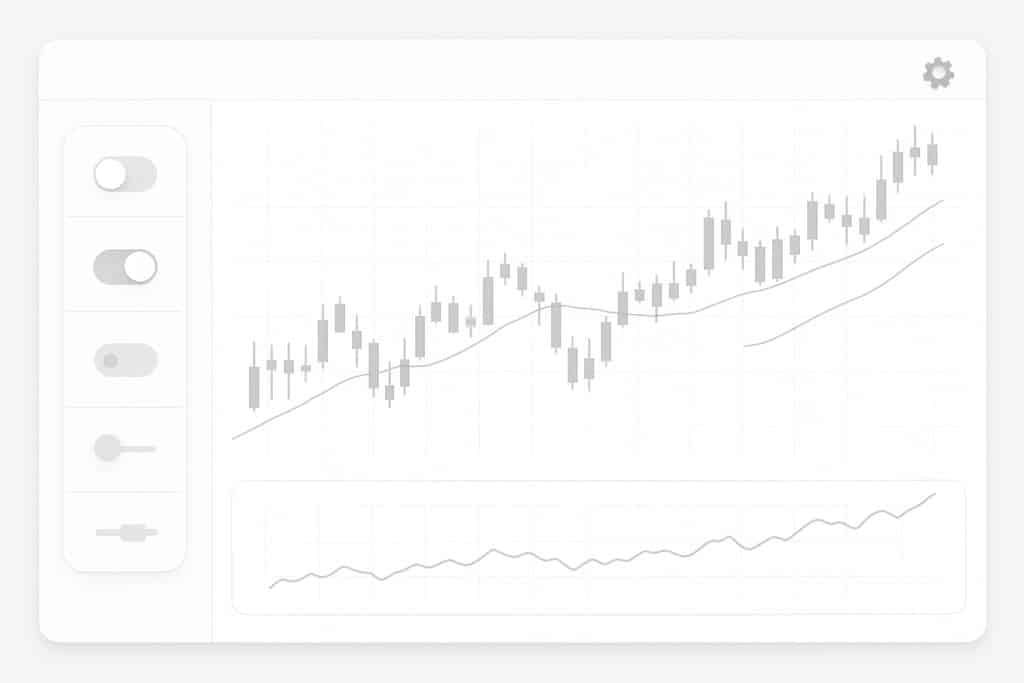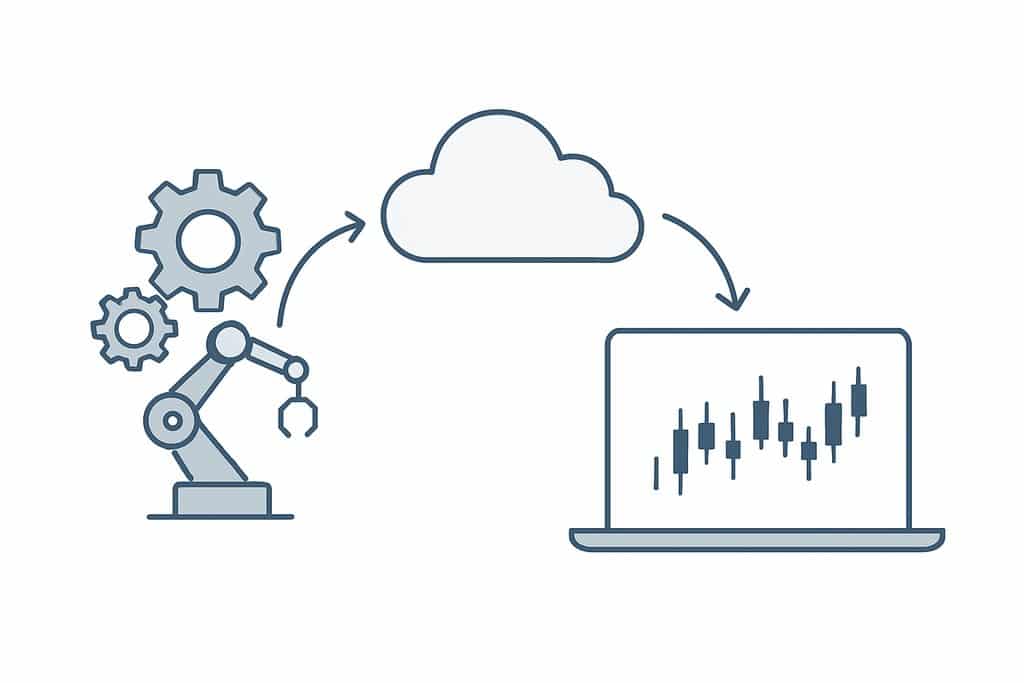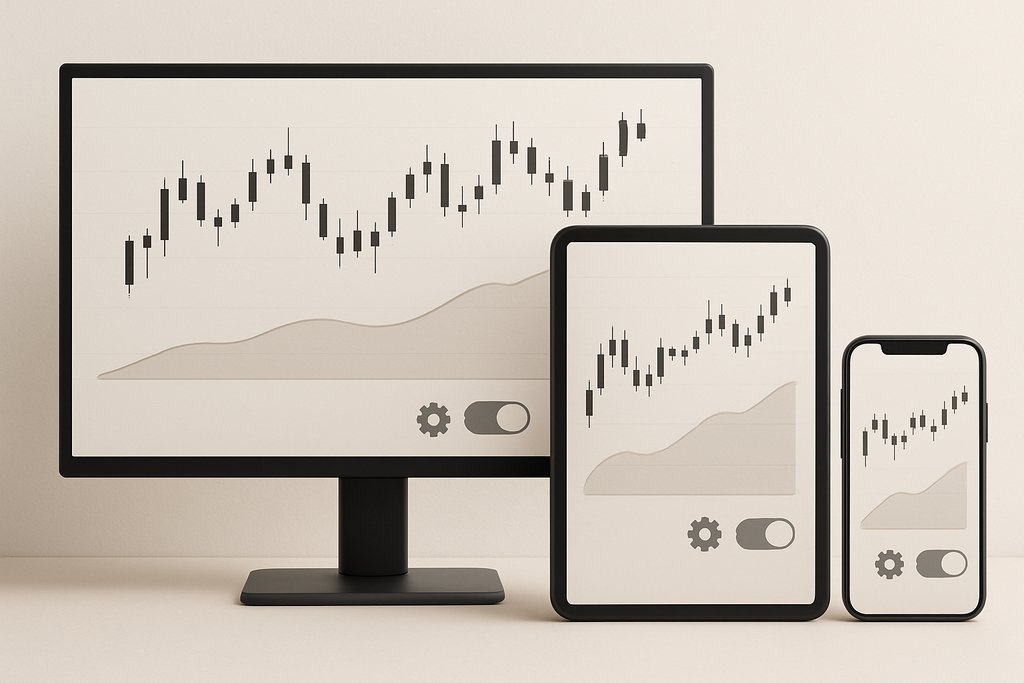Best Automated Trading Platform: Top Picks for 2025
Use this practical guide to compare the best automated trading platforms, understand must-have features, and go from idea to live execution fast with minimal friction.

What you’ll learn
- How automated trading platforms work
- Which features matter for speed and reliability
- How to test and deploy a rules-based strategy
What is an automated trading platform and how it works
If you are searching for the best automated trading platform, chances are you want to turn ideas into trades faster, reduce manual errors, and stay on top of markets that move in milliseconds. The challenge is not a lack of tools. It is the opposite. There are click-and-drag builders, scripting platforms, copy networks, and enterprise suites that all promise smarter execution and better results. Picking the right one requires clarity about what you trade, how you make decisions, and how quickly you need to react.
This guide gives you a practical, expert view of what best really means for different trader profiles. You will learn how modern automation works, which features matter most, and how to go from concept to a live strategy with minimal friction. Where it makes sense, we will show how Obside helps you implement these ideas in minutes.

An automated trading platform lets you define rules for when to buy, sell, or rebalance, then executes those rules automatically across your connected brokers and exchanges. At a minimum it provides market data, a rules engine, and order execution. Advanced platforms add robust backtesting, portfolio management, risk controls, alerts, and a way to connect non-price signals like news or macroeconomic events.
If you want a formal definition and history, see Investopedia’s overview of algorithmic trading and the Wikipedia entry on algorithmic trading for broader context. For a hands-on angle, our guide to Algorithmic Trading: Build, Test and Automate in 2025 goes step by step.
Most users who search for the best automated trading platform want fewer clicks between idea and execution. That means a system that understands your intent, translates it into rules, validates those rules on historical data, and pushes them live without complex coding or glue scripts. Obside was built around this flow. You describe what you want in plain language to Obside Copilot, run an ultra-fast backtest, and deploy the same logic to your connected accounts. From simple smart alerts to full portfolio strategies, the same workflow applies. Learn more about trading automation and how to move from signals to live orders.
The traits that define the best automated trading platforms
Finding the best tool is not about brand names. It is about the platform’s core capabilities and how they match your needs. Focus on the traits below to separate gimmicks from an engine you can rely on when it matters.
Speed from idea to execution
The most valuable edge is often time. A platform that turns a human description into a testable and tradable rule in seconds lets you explore more ideas and catch more opportunities.
- Natural language to rules translation that is accurate and flexible
- One-click transition from backtest to live or paper mode
- Real-time triggers that can react to prices, technical signals, and non-price events
Obside’s chat-first Copilot was designed for this exact loop. Say “Buy 50 dollars of Bitcoin every Monday at 10:00” or “Sell if S&P 500 drops 10 percent” and it sets it up, backtests it, then asks if you want to go live. For speed freaks, also see our review of the best day trading platform.
Breadth of signals and data coverage
Price-only triggers are not enough. The best automated trading platforms let you combine technical indicators, fundamentals, news, social signals, or macro data. This is essential if you want rules like “sell my stocks if new tariffs are announced” or “buy oil when a hurricane hits.” Obside supports conditions tied to prices, indicators like RSI or MACD, corporate events, and macro news so your strategies can see beyond the chart. If you need a refresher on indicators, start with the RSI indicator guide.
Backtesting realism and speed
Backtesting must be fast and honest. You want results in seconds, but with controls for slippage, fees, and realistic order types. Without this, you risk overfitting to perfect past fills that never happen live. Obside’s ultra-fast backtesting engine helps you iterate quickly, then refine assumptions to mimic real world execution.
If you want to dig deeper into the practice of backtesting and overfitting, this Investopedia explainer on overfitting is a solid primer.
Execution quality and broker connectivity
A great idea fails without the right pipes. Check that the platform connects to your brokers and exchanges, supports the order types you need, and routes orders with minimal latency. For multi-asset traders, seamless connectivity to stocks, crypto, and forex saves effort. Obside executes through your connected brokers and exchanges so you can run one rule set across multiple venues.
Risk controls, monitoring, and alerting
Automation without guardrails can compound mistakes. You want global kill switches, daily loss limits, per-strategy position caps, trailing stops, and health alerts on data or connectivity. Real-time notifications for breaches and anomalies are non-negotiable if you plan to let strategies run while you are away from the screen. Obside lets you define protective rules as part of your strategy or as global portfolio constraints, plus it can notify you instantly if conditions change.
No-code ease with pro-level depth
Some traders prefer drag-and-drop. Others want full scripting. The best automated trading platforms either cover both or offer a smooth path from simple to advanced logic. Obside uses natural language as the starting point, then lets you refine conditions, tie together multi-timeframe logic, and combine indicators without code.
Reliability, transparency, and recognition
Uptime, clear logs, and a track record matter more than glossy dashboards. Look for transparent reporting across backtests and live trades, reproducible results, and references from experienced users. Obside won the Innovation Prize 2024 at the Paris Trading Expo and is supported by Microsoft for Startups, which signals industry recognition of its approach.
No-code, scripting, copy trading, or DIY: which approach is best
There is no single best automated trading platform for every trader. Your ideal stack depends on how you work. If you thrive on speed and iteration, a no-code or natural language system removes friction. You can go from a thought to a test in seconds, then refine. This is where Obside shines.
If you love full control, scripting platforms give you precision but require software discipline. You will need to manage code, data cleaning, and deployment. Copy-trading networks can be a shortcut to run others’ strategies, though you give up control and may inherit hidden risks. A DIY framework in Python or Node puts you fully in charge, but you must own data ingestion, scheduling, monitoring, and all the parts that break at 3:17 a.m. For a broader view of choices, see our guide to the algorithmic trading platform landscape.
For most active traders who want autonomy without the burden of building infrastructure, a platform that lets you describe logic in plain English, test it fast, and deploy to multiple brokers is often the sweet spot.
Practical guide: build and deploy a rules-based strategy in minutes
Let’s walk through a concrete workflow that covers idea capture, validation, and live deployment using Obside. The same thinking applies on other platforms, though the steps may take longer.
Start with a precise idea. Suppose you want to trade EUR/USD when momentum flips. In Obside Copilot, describe your rule in plain language: “Notify me if RSI crosses 70 on EUR/USD and MACD turns bearish, then open a short position with a 1 percent risk and a 2 to 1 reward.” Copilot translates this into conditions, entry, and exits. You can adjust timeframes, for example use RSI on a 15 minute chart and MACD on a 1 hour chart to confirm momentum across frames.
Validate with a fast backtest. Run the strategy over the last 12 to 24 months and check win rate, average return per trade, drawdown, and exposure. Add realistic slippage and fees. If results are unstable across years or regimes, reduce complexity, widen stops, or add a higher timeframe filter.
Harden risk and exits. Convert a loose stop into a trailing ATR stop so the trade breathes. Add a daily max loss, and cap the number of open positions. Set alerts to ping you when drawdown hits a threshold so you can pause the system.

Connect execution. Link your broker or exchange in Obside. Choose paper trading first to see fills and behavior in live market conditions. When it behaves as expected for a few weeks, switch the same strategy to live.
Monitor with smart alerts. You can add triggers that do not open trades but help you watch regime shifts. For example, “Tell me when the VIX spikes by more than 20 percent intraday” or “Alert me if the ECB rate decision hits the tape.” Obside supports news and macro conditions so you can react when fundamentals change.
Expand to multi-asset logic. Obside lets you combine non-price triggers with execution. You could say “Buy 50 dollars worth of Tesla if Elon Musk tweets about it, but only if Tesla’s 1 hour RSI is below 60” or “Sell all my positions if the S&P 500 drops by 10 percent in a day.” For crypto, “Buy 1000 dollars of Bitcoin if the price is below 100,000 dollars and daily volume doubles.” These are simple examples, but the same pattern scales to portfolio rebalancing and multi-timeframe trend systems.
Scale with a portfolio rule. Suppose you want a long-term allocation: “Keep 50 percent of the portfolio in Bitcoin, 25 percent in Ethereum, and 25 percent in USDC, rebalance weekly with a 2 percent tolerance.” Copilot sets this as a standing portfolio strategy. If you prefer active trend logic, try: “When the Supertrend becomes bullish on the 2 hour chart, if RSI is not overbought and the Supertrend on the 8 hour chart is also bullish, then buy. For selling, reverse the logic. Place a trailing stop-loss at 5 ATR on the 2 hour chart and close if the 2 hour Supertrend flips.” Backtest, review risk, then deploy.
Alerts: “Alert me if Bitcoin rises above 150,000 dollars and daily volume doubles.”
Actions: “Buy 1000 dollars of Bitcoin if the price is below 100,000 dollars.”
Full strategies: “Buy when there is a bullish RSI divergence on 15 minutes, stop at day’s low, take profit at 10 percent.”
Benefits of automation and key considerations before you go live
The best automated trading platforms give you three major advantages. First, consistency. Rules fire the same way every time, free from fatigue or fear of missing out. Second, speed. Markets move quickly around news and liquidity gaps, so a rules engine that listens 24/7 will beat manual clicks. Third, scale. You can monitor dozens of symbols and run diversified logic without losing focus.
There are tradeoffs. Overfitting is the classic trap. If you tweak a system until the backtest is perfect, it often fails forward. Combat this with simple rules, walk-forward tests, and out-of-sample validation. Slippage and liquidity matter. Test with conservative assumptions. Data quality is another risk. If your indicators depend on bad prints or delayed feeds, the logic breaks. Use platforms that are transparent about data sources and timestamps, and set alerts for data anomalies. Finally, avoid strategy sprawl. Too many overlapping systems can cancel each other or amplify risk. Use a portfolio view to understand combined exposure.
A few practical safeguards go a long way:
- Start in paper mode to validate behavior under live conditions
- Set global daily loss limits and per-strategy max drawdown stops
- Add regime filters so you avoid trading the wrong patterns
- Keep a manual pause and kill switch for rare market events
Why Obside is a strong candidate for best automated trading platform
Obside focuses on the idea to execution gap that frustrates traders. You describe what you want to watch or trade in plain language, Copilot turns it into an automation, the backtest engine validates it in seconds, and the same rules go live with your connected brokers and exchanges. This removes glue code, context switching between tools, and human lag.
A few capabilities stand out for power users: real-time reaction to prices, indicators, news, and macro data, ultra-fast backtesting for rapid iteration, natural language strategy building with nuanced conditions, portfolio-level automation including rebalancing and risk controls, and a marketplace where traders share strategies.
Professionals have taken notice. Obside received the Innovation Prize 2024 at the Paris Trading Expo and is supported by Microsoft for Startups. If moving from concept to action is your main bottleneck, this design choice makes Obside a compelling pick.

You can explore the platform at obside.com and create an account at beta.obside.com/register. Prefer to try first with no risk capital involved? Use paper trading and smart alerts. For example, “Alert me if Apple announces a new product,” or “Tell me when OpenAI announces a new AI model.” Turning information into execution is the point.
Who the best automated trading platforms serve best
Different trader types benefit in specific ways, but the common thread is turning intent into consistent actions without delay.
- Day traders gain speed, consistency, and the ability to track more symbols without missing setups. Automation avoids chase entries and frees you to focus on risk and context.
- Swing traders can codify entries, exits, and alerts, then let positions manage themselves with trailing stops and time-based exits.
- Long-term investors can automate rebalancing, dollar-cost averaging, and rules like rebalance if volatility spikes or raise cash if earnings revisions fall.
- Crypto traders benefit from 24/7 monitoring across centralized exchanges, on-chain signals where available, and faster reaction to news catalysts.
- Portfolio managers can run diversified systems across asset classes and control risk at the portfolio level.
In each case, the best automated trading platform is the one that plugs into your existing process without forcing a rebuild. If you think in rules and like to see quick tests before committing capital, you will find the most value.
Conclusion: your next steps to pick and use the best automated trading platform
Picking the best automated trading platform is about matching the tool to your workflow. Prioritize speed from idea to live rules, broad data coverage, realistic backtesting, robust execution, and risk controls you can trust. Start small with a single, well-defined rule, validate it with conservative assumptions, and let it run in paper mode. Expand only after it behaves the way you expect in live conditions.
If you want to try a chat-first approach that moves from intent to action in seconds, explore Obside and create your account. Describe an alert or a strategy in plain language, run a backtest, and deploy to paper or live when comfortable. The less time you spend wiring tools together, the more time you spend finding edges and controlling risk.
Prefer to see how it works first? Browse the platform overview, explore strategy templates, and run your first paper-traded automation within minutes.
Written by Benjamin Sultan. Edited by Florent Poux.
Frequently Asked Questions
What is the best automated trading platform for beginners
For beginners, the best automated trading platform is one that converts plain language into executable rules, provides fast and realistic backtesting, and offers paper trading so you can learn without risking capital. Obside is strong here because Copilot turns natural language into strategies, then runs quick tests before you go live. To practice, try our paper trading guide.
Can automated trading be profitable
Automated trading can be profitable if your edge is real, risk is controlled, and your backtests reflect execution reality. Many traders fail due to overfitting and poor risk management. Use simple rules, apply walk-forward validation, test out of sample, and keep strict loss limits to improve your odds.
Do I need to know how to code to use an automated trading platform
No. Modern platforms like Obside let you describe strategies in plain English and refine conditions without code. Coding can still help for custom logic, but it is no longer a barrier to entry.
How much capital do I need to start
You can start with very small amounts, especially in markets that allow fractional shares or small crypto orders. The key is to begin in paper mode, then fund gradually once you have validated behavior. Focus on percentage risk per trade and overall drawdown limits rather than a fixed dollar target.
Will automated trading work for both crypto and stocks
Yes, as long as your platform connects to the venues you trade and supports rules tuned to each market’s behavior. Obside supports multiple brokers and exchanges so you can run unified logic across symbols, with different risk parameters if needed.
Related articles
- Best Trading Bot: Choose, Test, and Automate Your Edge
- How to Start Trading: A Practical Beginner’s Guide
- Trading for Beginners: Simple Steps to Your First Trades
- Best Trading App: Pick the Right Platform for You in 2025
- Trading Simulator: Practice, Test, and Improve Strategy
- Best Day Trading Platform: Speed, Orders, Automation
